International Steel Prices

Foreign vs. Domestic HRC Prices: High Spread Continues to Narrow
Written by Brett Linton
September 23, 2018
The following calculation is used by Steel Market Update to identify the theoretical spread between foreign hot rolled steel import prices (delivered to USA ports) and domestic hot rolled coil prices (FOB domestic mills). We want our readers to be aware that this is only a “theoretical” calculation as freight costs, trader margin and other costs can fluctuate, ultimately influencing the true market spread. We do not include the 25 percent tariff or any other unusual costs to the calculations we provide.
We are now comparing the SMU U.S. hot rolled weekly index to CRU weekly price indices for Germany, Italy and the Far East (East and Southeast Asian port). We also periodically include CRU monthly price indices for Turkey, CIS and Brazil when they are updated.
![]() SMU adds $90 per ton to these foreign prices taking into consideration freight costs, handling, trader margin, etc. This provides an approximate “CIF U.S. ports price” that can then be compared against the SMU U.S. hot rolled price, with the result being the spread (difference) between domestic and foreign hot rolled prices. As the price spread narrows, the competitiveness of imported steel into the United States is reduced. If the spread widens, then foreign steel becomes more attractive to U.S. flat rolled steel buyers. A positive spread means U.S. prices are higher than foreign prices, while a negative spread means U.S. prices are less than foreign prices.
SMU adds $90 per ton to these foreign prices taking into consideration freight costs, handling, trader margin, etc. This provides an approximate “CIF U.S. ports price” that can then be compared against the SMU U.S. hot rolled price, with the result being the spread (difference) between domestic and foreign hot rolled prices. As the price spread narrows, the competitiveness of imported steel into the United States is reduced. If the spread widens, then foreign steel becomes more attractive to U.S. flat rolled steel buyers. A positive spread means U.S. prices are higher than foreign prices, while a negative spread means U.S. prices are less than foreign prices.
As of Wed., Sept. 19, the CRU German HRC price was $608 per net ton, up $1 from the previous week and up $7 from two weeks prior. Adding $90 per ton for import costs, that puts the price at $698 per ton from Germany delivered to the U.S. The latest Steel Market Update hot rolled price average is $850 per ton for domestic steel, unchanged over last week and down $15 over two weeks ago. The spread between German and U.S. HR prices is now +$152 per ton, down from +$153 last week, and down from +$174 two weeks ago. That means domestic HR is now theoretically $152 per ton more expensive than importing HR steel from Germany. This is the eighth consecutive weekly decline, down $79 total. The four-week average price spread is now +$166 per ton, down $14 from last week.
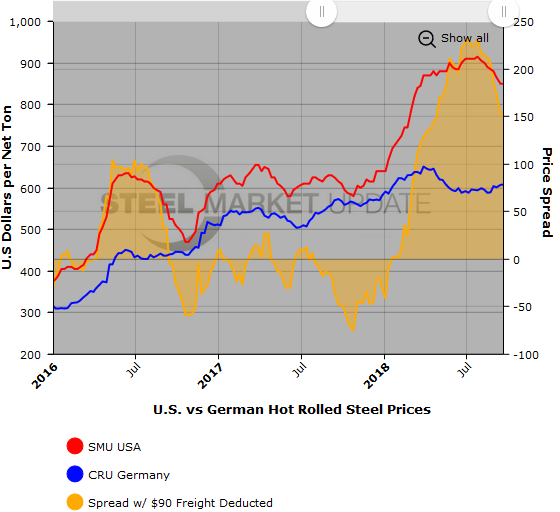
CRU published Italian HRC prices at $569 per net ton, up $1 over both last week and two weeks ago. After adding import costs, we get a delivered price of approximately $659 per ton. The spread between the Italy and U.S. figure is +$191 per ton, down from +$192 one week ago and +$207 two weeks ago. Meaning that U.S. HR is theoretically $191 per ton more expensive than importing steel from Italy. Like the German spread, this is the eighth consecutive weekly decline in the Italian price spread, down $75 total. The four-week average is now +$202, down $10 over last week.
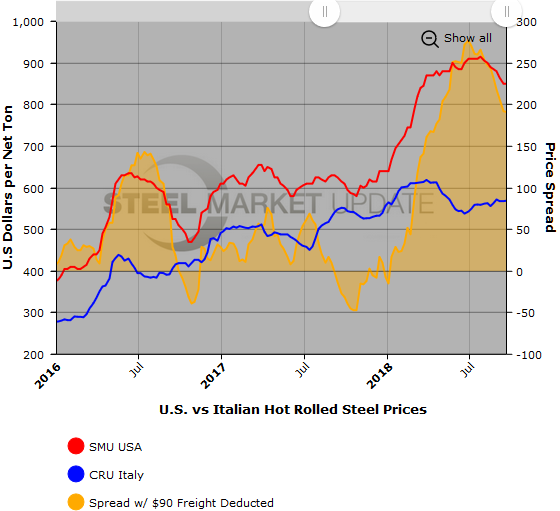
The CRU Far East HRC price remained steady week over week at $531 per net ton, down $4 from two weeks prior. Adding import costs, that puts the price at $621 per ton. The spread between the Far East and U.S. figure is +$229 per ton, unchanged from last week and down from +$240 from two weeks ago. That means domestic HR would theoretically be $229 per ton more expensive than importing steel from East or Southeast Asia. This is the sixth consecutive week the spread has remained the same or declined, down $41 total. The four-week average price spread is now +$238 per ton, down $7 from last week.
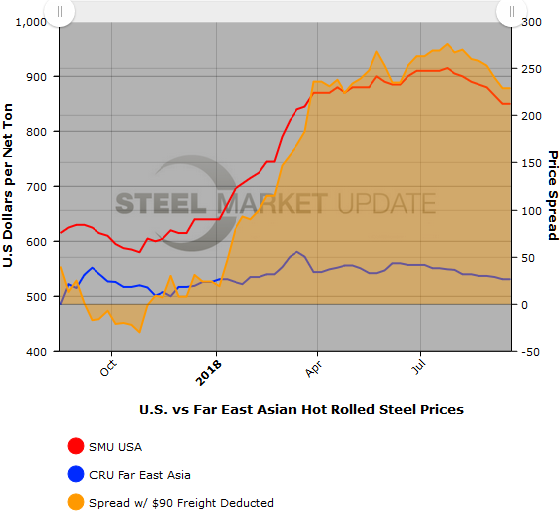
Freight is an important part of the final determination on whether to import foreign steel or buy from a domestic mill supplier. Domestic prices are referenced as FOB the producing mill, while foreign prices are FOB the Port (Houston, NOLA, Savannah, Los Angeles, Camden, etc.). Inland freight, from either a domestic mill or from the port, can dramatically impact the competitiveness of both domestic and foreign steel. When considering lead times, a buyer must take into consideration the momentum of pricing both domestically and in the world markets. In most circumstances (but not all), domestic steel will deliver faster than foreign steel ordered on the same day.

Brett Linton
Read more from Brett LintonLatest in International Steel Prices
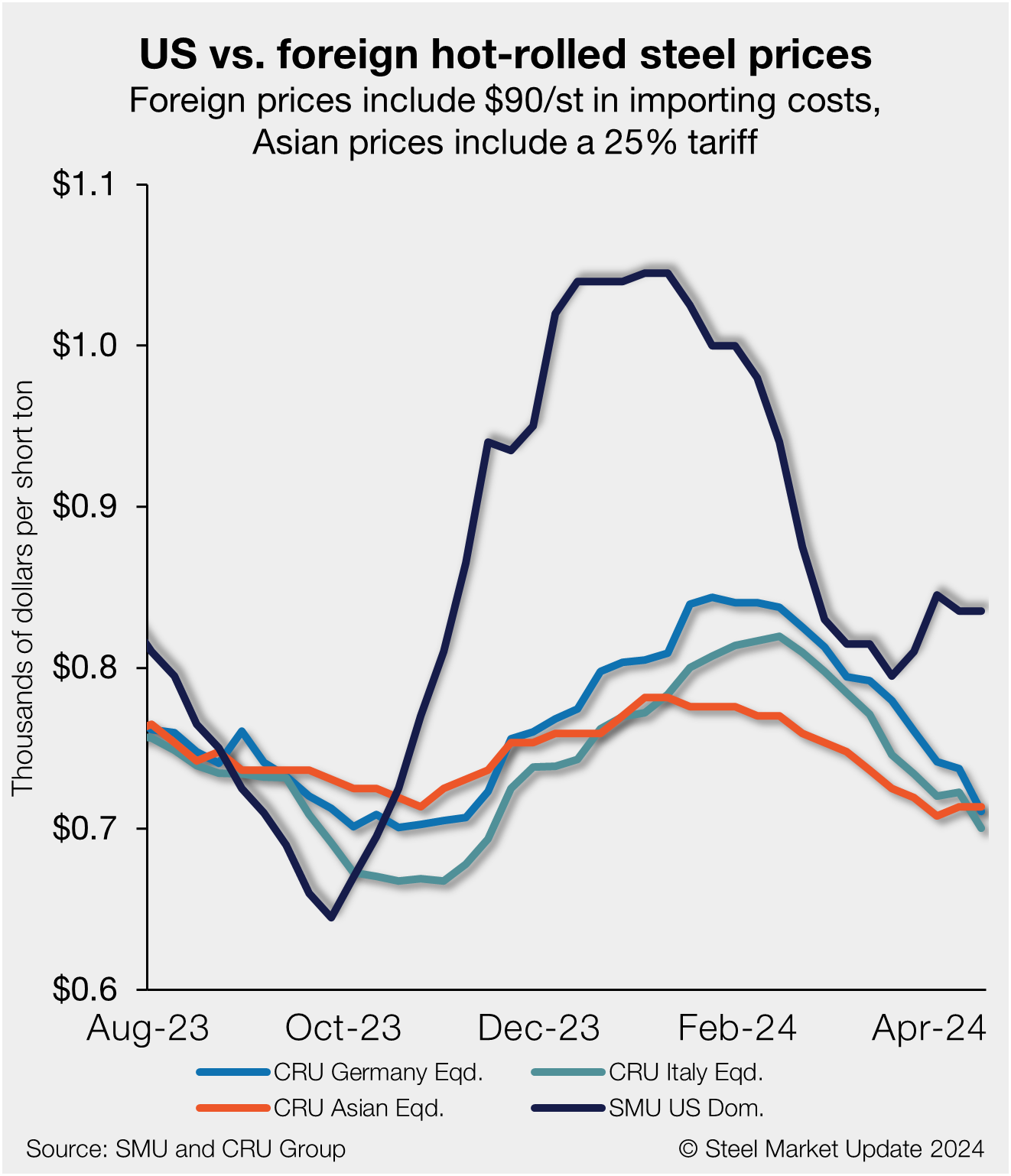
US HR premium widens on lower offshore tags
US hot-rolled (HR) coil has become gradually more expensive than offshore hot band in recent weeks, as stateside prices have stabilized while imports moved lower.
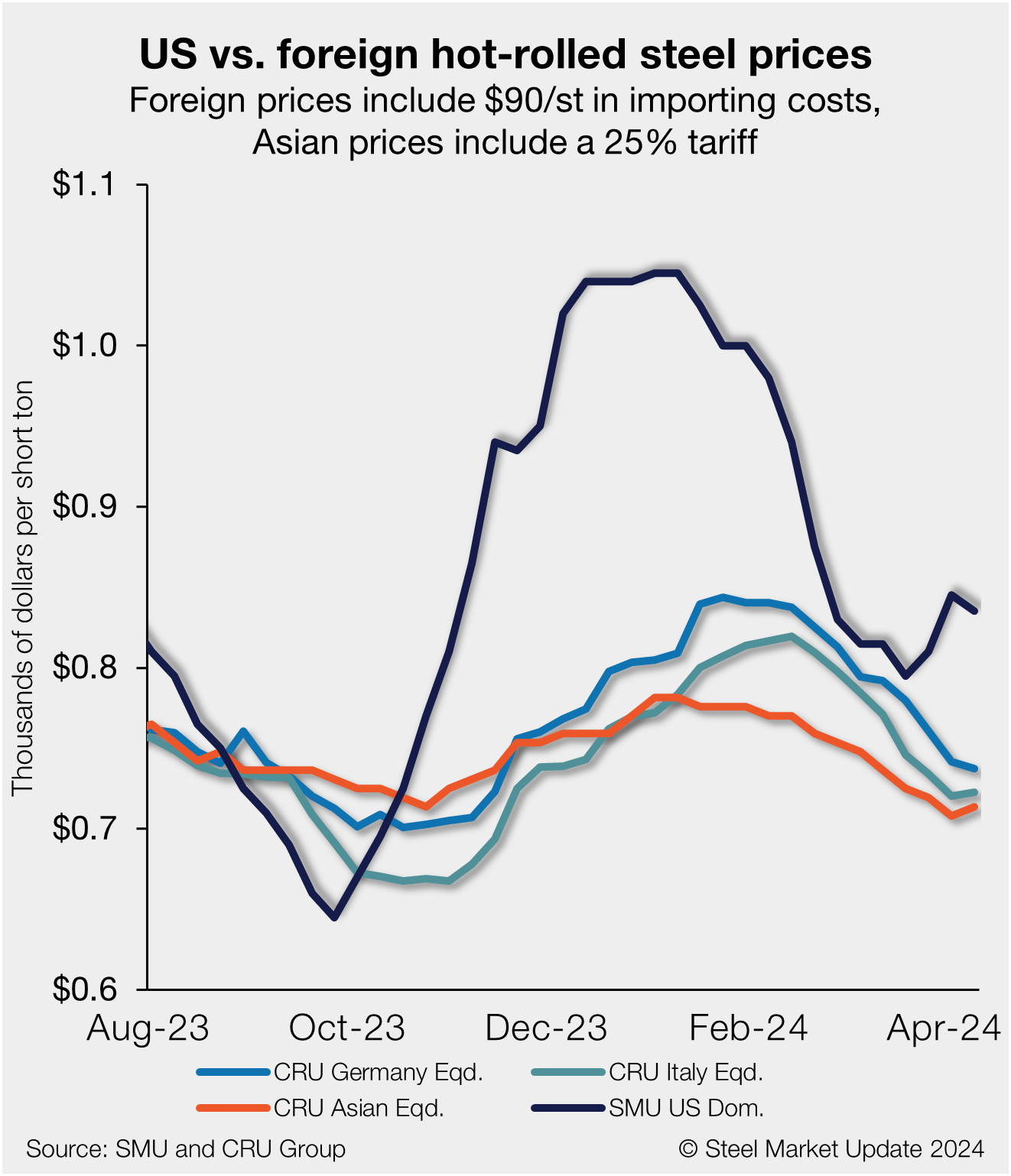
US HR prices slip, though still more expensive than imports
US hot-rolled (HR) coil has become increasingly more expensive than offshore hot band as stateside prices have moved higher at a sharper pace vs. imports.
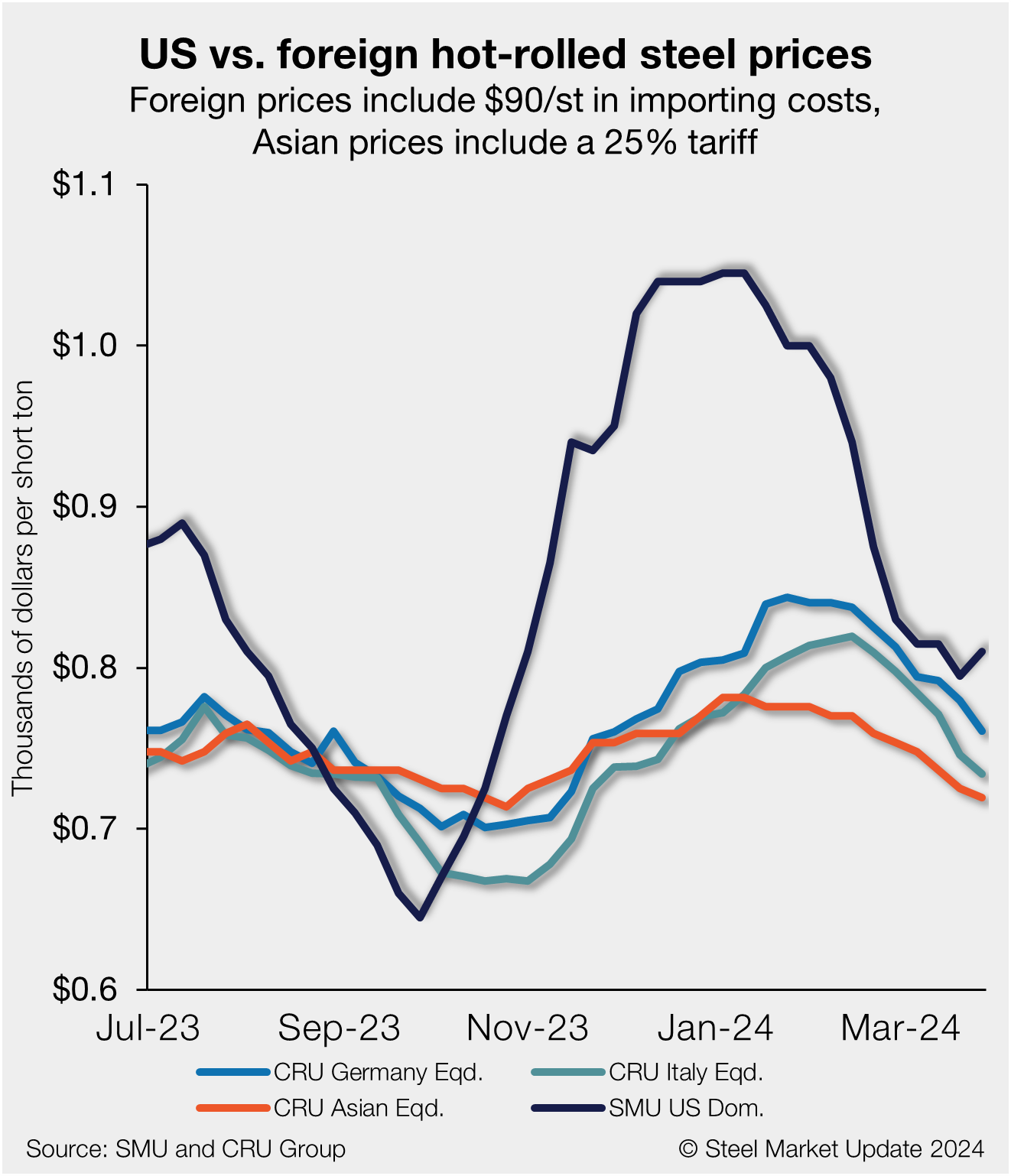
US HR prices rebound, no longer near parity with imports
US hot-rolled coil and offshore hot band moved further away from parity this week as stateside prices have begun to move higher in response to mill increases.
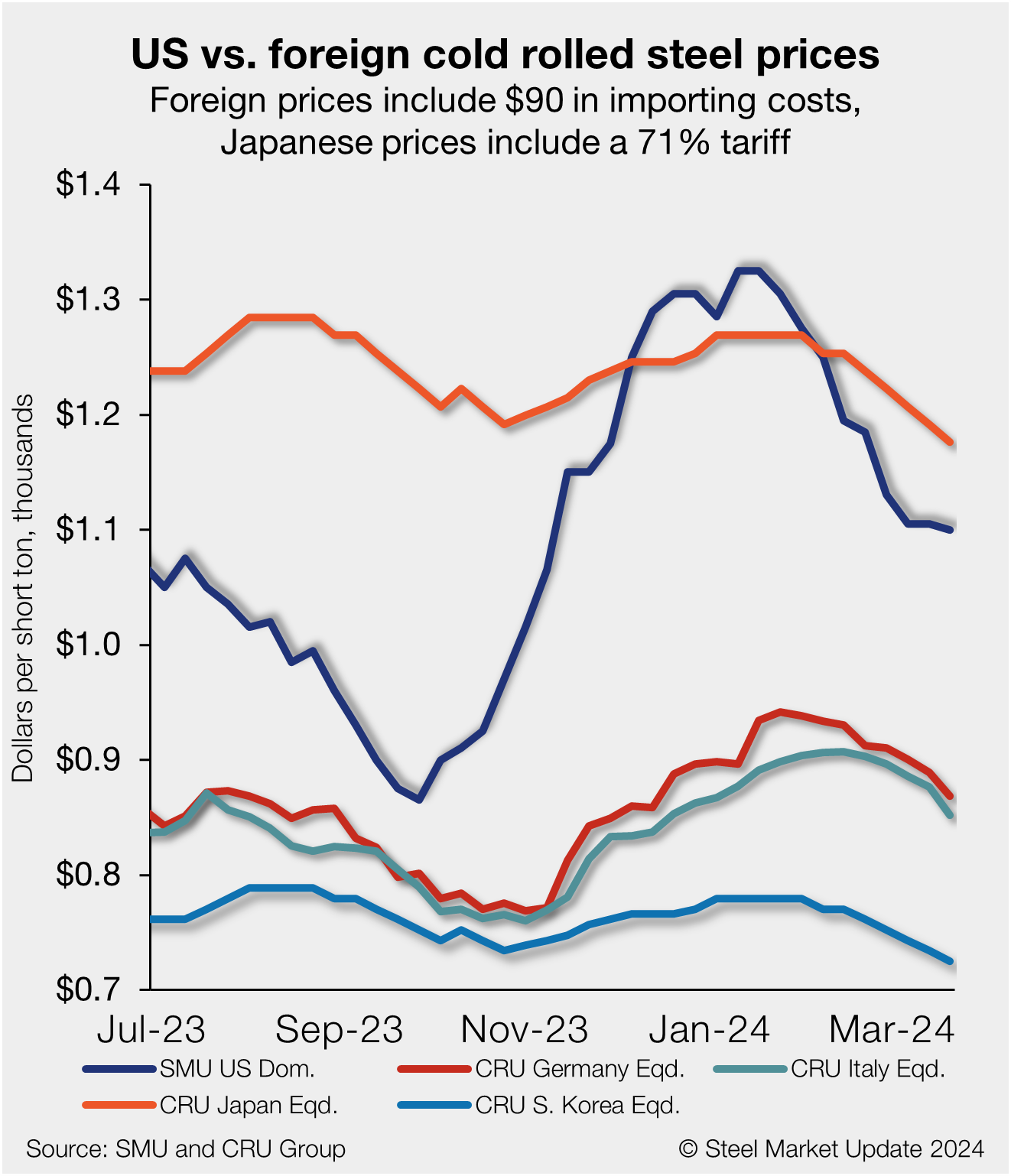
US cold rolled still more expensive than imports
Foreign cold-rolled (CR) coil remains notably less expensive than domestic product even with repeated tag declines across all regions, according to SMU’s latest check of the market.
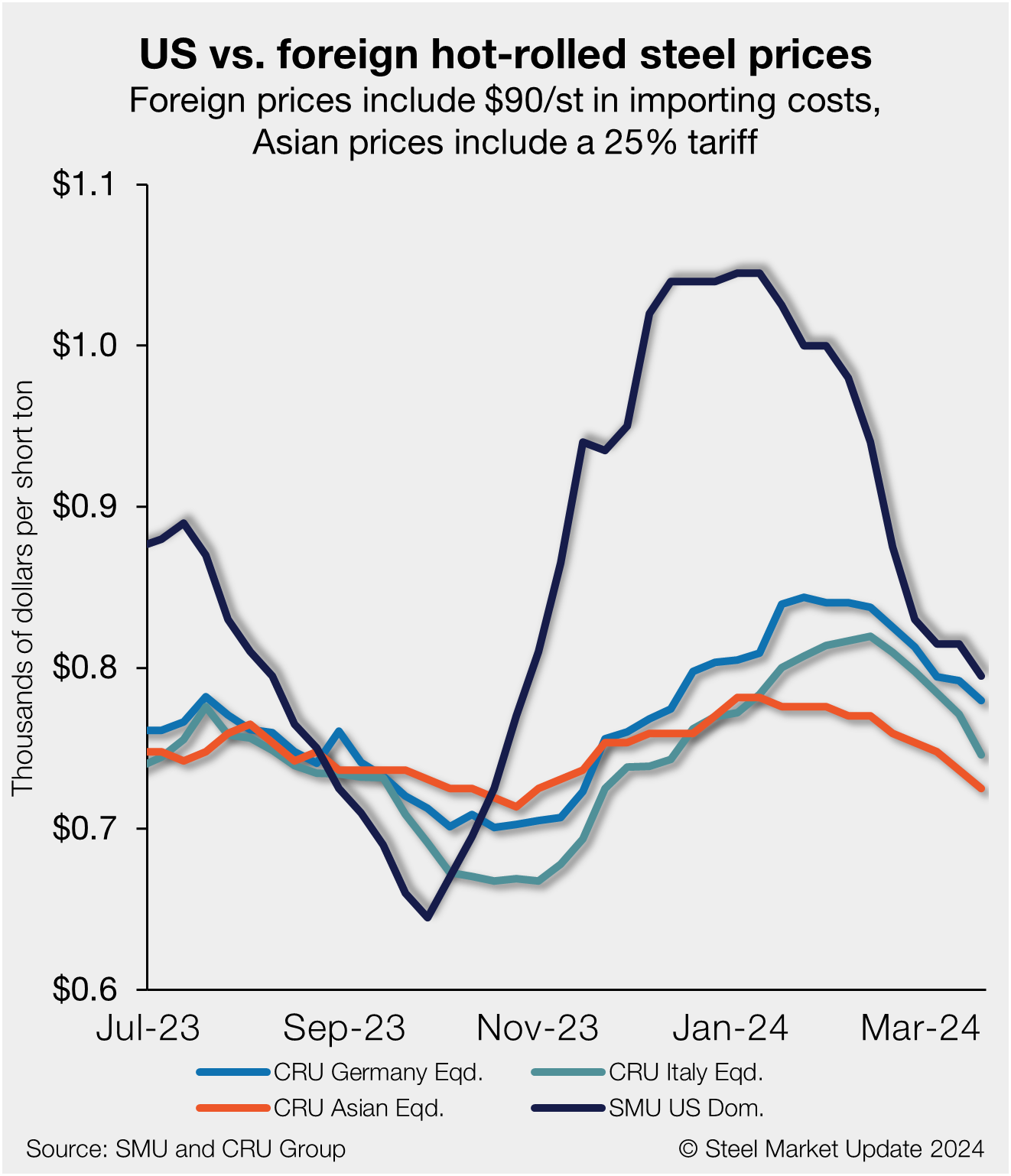
US HRC prices slowly inch toward parity with imports
US hot-rolled coil (HRC) remains more expensive than offshore hot band but continues to move closer to parity as prices decline further. The premium domestic product had over imports for roughly five months now remains near parity as tags abroad and stateside inch down.
